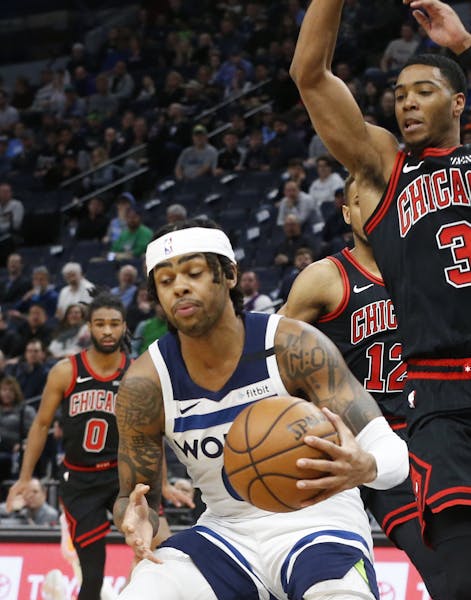Timberwolves history is not bogged down by an overabundance of great shooting guards. They've tried drafting them (J.R. Rider, Rashad McCants) and going all-in on established veterans who went bust after one season (Latrell Sprewell, Jimmy Butler). When they've found functional wings (Wally Szczerbiak, Andrew Wiggins) they've become determined to build around them as key second pieces next to transcendent big men (Kevin Garnett and Karl-Anthony Towns).
But this fact remains: Exactly two wings have been named to an All-Star game in the franchise's three decades of existence: Szczerbiak in 2001-02 and Butler in 2017-18.
In a flurry of moves at the trade deadline a month ago, the Wolves took another swing at it. Out went Wiggins, the former No. 1 overall pick who had occupied a wing for almost every Minnesota game over the last 5.5 seasons. In came Malik Beasley — a younger, better-shooting option.
Beasley had started just 19 career games with Denver since coming into the league in 2016 as the No. 19 overall pick, but his numbers projected out well.
Those "per 36 minutes" stat lines on Basketball Reference can either be indicative of a diamond in the rough, or they can be fool's gold. If they look impressive for a player getting half those minutes on a nightly basis, are they indicative of a player who would thrive in a bigger role and with heavy starter's minutes? Or do they suggest a player who is ideally suited for the minutes he's getting — largely against other team's reserves — with the potential to have flaws exposed with more opportunity?
So far with Beasley, it is the former. He is thriving in an expanded role — averaging 22.9 points, 5.4 rebounds and 2.4 assists in 11 pretty efficient games. That includes a combined 52 points in back-to-back wins over New Orleans and Chicago the last two nights.
He's been particularly good from three-point range (43.9% on a high volume of 8.9 attempts per game), but even a slight comedown from that mark to his career average (38.9%) would be a welcome sight for a franchise whose all-time leader in three-point makes is Wiggins (a sub-par shooter from distance at 33.2% for his career) and a team specifically tailored now to shoot a high volume of threes.
What I didn't know about Beasley was that he could get to the rim and finish (20.4% of his shots with the Wolves have been from 0-3 feet, and he's shooting above league average at 67.6% on those attempts).
Offensively, he's the real deal. Defensively, he can politely be termed a work in progress — the side of the ball where being a little undersized (6-4, 187 pounds) hurts him. Beasley's defensive rating in his 11 games with the Wolves is 119.4. Only Juancho Hernangomez, who came over from Denver in that same trade with Beasley, has a worse rating (120.9) in that span.
Both players had a 107.3 mark last season in Denver, giving rise to the hope that maybe it's not all them.
On offense, though? If the Wolves make Beasley a priority in restricted free agency, which seems like a no-brainer considering the asset (Robert Covington) required to get him and what he has shown so far, he could team up with D'Angelo Russell to form a very promising backcourt. Some have already said it could be the best in franchise history, which is a very Wolves fan thing to do.
That Beasley is already drawing such rave reviews is a testament to his personality and production plus — let's be honest — how starved Wolves observers are for anything resembling strong play from that position.
A shooting guard who can … shoot? What a concept.
AP PHOTOS: Russian kids ride sticks with a horse's head in hobby horsing competition
Anze Kopitar scores in overtime, Kings beat Oilers 5-4 in Game 2 to tie series
Defending champion Golden Knights beat Stars 3-1 to take 2-0 series lead home to Vegas

